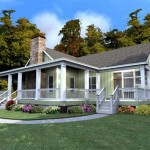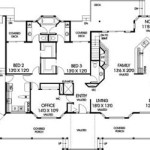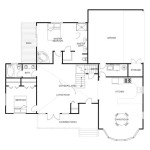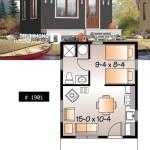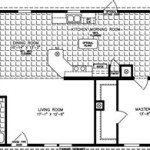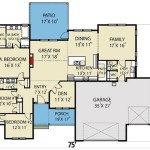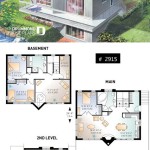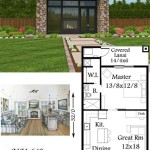Maximizing Space and Functionality: Salon Floor Plans for 1500 Sq Ft
Designing an efficient and aesthetically pleasing salon within a 1500 square foot space requires careful planning and consideration of various factors. The arrangement of styling stations, shampoo bowls, reception areas, and other essential zones directly impacts workflow, client experience, and overall profitability. This article explores critical aspects of salon floor plans specifically tailored for 1500 sq ft spaces, offering insights into optimizing layout, zoning, and equipment placement.
The initial step involves a thorough assessment of business needs and target clientele. Understanding the range of services offered (e.g., hair styling, manicures, pedicures, facial treatments), the desired ambiance (e.g., modern, classic, minimalist), and the target demographic guides the design process. For instance, a salon specializing in complex color treatments may require more space dedicated to mixing stations and processing areas compared to a salon focusing primarily on haircuts. Similarly, a high-end salon aiming for a luxurious atmosphere will allocate more square footage to a comfortable waiting area and private treatment rooms.
Once the business goals and target market are defined, the design process can begin. Architects and interior designers utilize various software platforms to create detailed floor plans. These plans illustrate the spatial relationships between different areas, allowing for adjustments and optimizations before any physical construction or remodeling begins. Key considerations during this phase include adherence to local building codes, accessibility standards (ADA compliance), and the efficient use of natural light.
Strategic Zoning for Optimal Workflow
Effective zoning creates distinct areas within the salon, each serving a specific purpose. This separation enhances workflow, minimizes noise disruptions, and contributes to a more organized and professional environment. Typical zones within a salon include the reception area, styling area, shampoo area, processing area (if applicable), manicure/pedicure area (if applicable), and a back-of-house area for storage, laundry, and employee break room.
The reception area typically serves as the first point of contact for clients and should be positioned near the main entrance. This area should include a reception desk, comfortable seating, and adequate space for displaying retail products. Careful consideration should be given to visibility and accessibility from all areas of the salon.
The styling area is the core of most salons and requires the most significant allocation of space. The number of styling stations depends on the number of stylists and the anticipated client volume. Adequate spacing between stations is crucial for stylist mobility and client comfort. Each station should include a chair, mirror, storage for tools and products, and appropriate lighting.
The shampoo area typically includes one or more shampoo bowls with reclining chairs. The location should be convenient for both stylists and clients, ideally positioned near the styling area but separated to minimize water splashes and noise. Plumbing requirements are a significant factor in determining the placement of shampoo bowls.
If the salon offers color treatments, a dedicated processing area is necessary. This area may include specialized equipment such as hair dryers or heat lamps. Proper ventilation is critical to manage fumes from hair dyes and other chemical treatments. The processing area may be combined with the shampoo area or located in a separate room, depending on the available space and design preferences.
Manicure and pedicure stations require dedicated space, especially if these services are a significant part of the business. Manicure stations typically include a table with two chairs, while pedicure stations may involve specialized chairs with built-in foot baths. Adequate ventilation is crucial in this area to manage odors from nail products.
The back-of-house area is often overlooked but essential for smooth salon operations. This area should include storage for supplies, a laundry area for towels and linens, and a break room for employees. The size and layout of the back-of-house area should be proportionate to the overall salon size and the number of employees.
Optimizing Equipment Placement and Traffic Flow
Beyond zoning, the specific placement of equipment within each zone significantly impacts workflow and client experience. Strategic placement ensures stylists have easy access to necessary tools and products, minimizing unnecessary movement and maximizing efficiency. Furthermore, well-planned traffic flow prevents congestion and creates a more relaxed and enjoyable atmosphere for clients.
In the styling area, the placement of styling stations should allow for ample space between chairs, preventing stylists and clients from bumping into each other. Mirrors should be positioned to provide optimal visibility for clients and stylists. Storage units should be within easy reach of the stylist's chair, minimizing the need to walk across the salon to retrieve tools or products. Lighting is critical in the styling area, with a combination of ambient and task lighting providing sufficient illumination for precision work.
The shampoo area should be designed to minimize water splashes and ensure client comfort. The placement of shampoo bowls should allow for easy access by stylists. Towel storage should be located within easy reach of the shampoo bowls. The flooring in the shampoo area should be water-resistant and easy to clean.
Manicure and pedicure stations should be positioned to maximize natural light and ventilation. Comfortable seating is essential for clients undergoing these treatments. Storage for nail products and tools should be readily accessible to the technicians. Proper ventilation is crucial to manage odors from nail products.
Traffic flow should be carefully considered throughout the salon. The layout should minimize bottlenecks and congestion, allowing clients and stylists to move freely between different areas. Clear pathways should be established to guide clients from the reception area to the styling stations, shampoo area, or other treatment rooms. The placement of furniture and equipment should avoid obstructing these pathways.
Leveraging Design Elements for Ambiance and Functionality
Beyond the practical considerations of zoning and equipment placement, design elements play a crucial role in creating the desired ambiance and enhancing the overall functionality of the salon. These elements include lighting, color palettes, materials, and décor. Thoughtful selection and integration of these elements contribute to a cohesive and visually appealing space.
Lighting is a critical element in any salon. A combination of ambient, task, and accent lighting can create a warm and inviting atmosphere while providing sufficient illumination for precise styling and treatment work. Ambient lighting provides overall illumination to the space, while task lighting focuses on specific work areas such as styling stations and shampoo bowls. Accent lighting highlights architectural features or decorative elements. Natural light should be maximized whenever possible, as it provides a flattering and healthy illumination.
Color palettes can significantly influence the mood and perception of the salon. Light and neutral colors can create a sense of spaciousness, while darker colors can add a touch of drama and sophistication. The choice of colors should be consistent with the desired ambiance and target clientele. Consider incorporating accent colors through artwork, accessories, or furniture to add visual interest.
The selection of materials should consider both aesthetics and durability. Flooring should be easy to clean and water-resistant, especially in areas such as the shampoo area and manicure/pedicure area. Wall finishes should be durable and resistant to stains and scratches. Furniture should be comfortable and stylish, reflecting the overall design aesthetic of the salon.
Décor elements such as artwork, plants, and accessories can add personality and character to the salon. These elements should be carefully chosen to complement the overall design aesthetic and create a welcoming and inviting atmosphere. Consider incorporating elements that reflect the salon's brand identity or target clientele.
Consider incorporating technology to increase the efficiency. Online booking systems, digital signage, and point-of-sale systems can streamline operations and enhance client experience. Integrating these technologies into the floor plan requires careful consideration of wiring and placement.
Designing a salon floor plan for 1500 sq ft requires a holistic approach that considers not only the spatial arrangement of equipment and zones but also the aesthetic and functional aspects of the design. Strategic planning, careful attention to detail, and a deep understanding of the business needs are essential for creating a salon that is both efficient and visually appealing.

Three Salon Floor Plans One 1 400 Square Foot Space Minerva Beauty

Beauty Salon Floor Plan Design Layout 1400 Square Foot

Beauty Salon Floor Plan Design Layout 2762 Square Foot

Ab Salon Equipment And Furniture Beauty Floor Plan Design Layout 1160 Square Foot

Nail Bar And Manicure Spa Interior Design 2d Ideas

Salon Floor Plan

Floor Plan Maker Salon See Description

5 Popular Salon Floor Plans Tips For Creating The Perfect Layout
Colonial Home 4 Bedrms 2 5 Baths 2448 Sq Ft Plan 147 1128

Vinius 8079 5 Bedrooms And 4 Baths The House Designers

